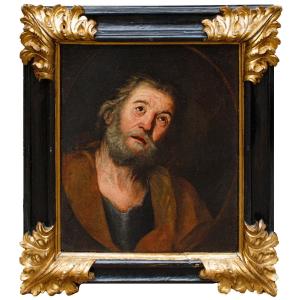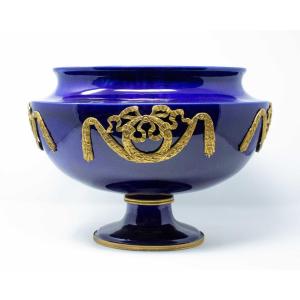Quadriga with the horses of San Marco
Bronze, 31 x 16 x 17 cm (alt.)
The group of four horses of San Marco, in bronze alloy, is now kept at the Museum of the Basilica of the same name in Venice and represented, Ideally, from a copy on the façade’s gallery.
The group is a Roman copy of an original Greek work and is mentioned in many Byzantine sources. Niceta Coniata, in her Historia, recalls an episode indirectly fundamental for the correct location of the group. On the occasion of the festivities organized by the emperor Manuel I Comnenus for the visit of the capital by the sultan of Iconium in 1158, a juggler threw himself from near the horses, He was a young man. "Four bronze horses are well fixed (...) coated with gold, with a little curved necks, looking at each other in the snout and show themselves puffing in the race to the finish", just above the carceres, the gates of the Hippodrome where the horses of the races waited for the signal of departure. With the sack of Constantinople by the crusaders in 1204, even the horses, already watched by Enrico Dandolo, reached the territory of the Serenissima. Described by Andrea Morosini in 1627, the horses abandoned for the first time the terrace of the facade of the basilica with the fall of the Republic of Venice in 1797: the quadriga was lowered from the loggia on December 13 and the following year it was transferred to Paris, on the monument symbol of the new power established, the triumphal arch of the Carrousel between the Tuileries gardens and the Louvre. With the defeat of Napoleon, the four horses finally returned to Venice thanks to the mediation of Antonio Canova papal envoy.
With the pressure of the war monster, the quadriga had to face a new transfer. "War was declared on the evening of May 23, 1915. On the morning of the 24th at five, two enemy seaplanes appeared over the city that was all rosy just freed from the blue veils of the night: and they threw four bombs. And one fell a hundred meters from the Doge’s Palace": so Ugo Ojetti in his libellus Il martirio dei monumenti.
On 27 May 1915, with the help of the army, each horse was lowered and housed inside the Doge’s Palace, placed between the Gate of the Paper and the Ladder of the Giants and covered with sacks, until November of 1917. With the defeat of Caporetto it was decided to transfer a large part of the artistic heritage to Rome, with the will to save it from war. The quadriga entered the inner courtyard of Palazzo Venezia, where it remained until the end of the war. After a restoration in 1982, the group returned to Venice and was finally housed in the Museum of the basilica.
The object is in good condition
















































 Le Magazine de PROANTIC
Le Magazine de PROANTIC TRÉSORS Magazine
TRÉSORS Magazine Rivista Artiquariato
Rivista Artiquariato